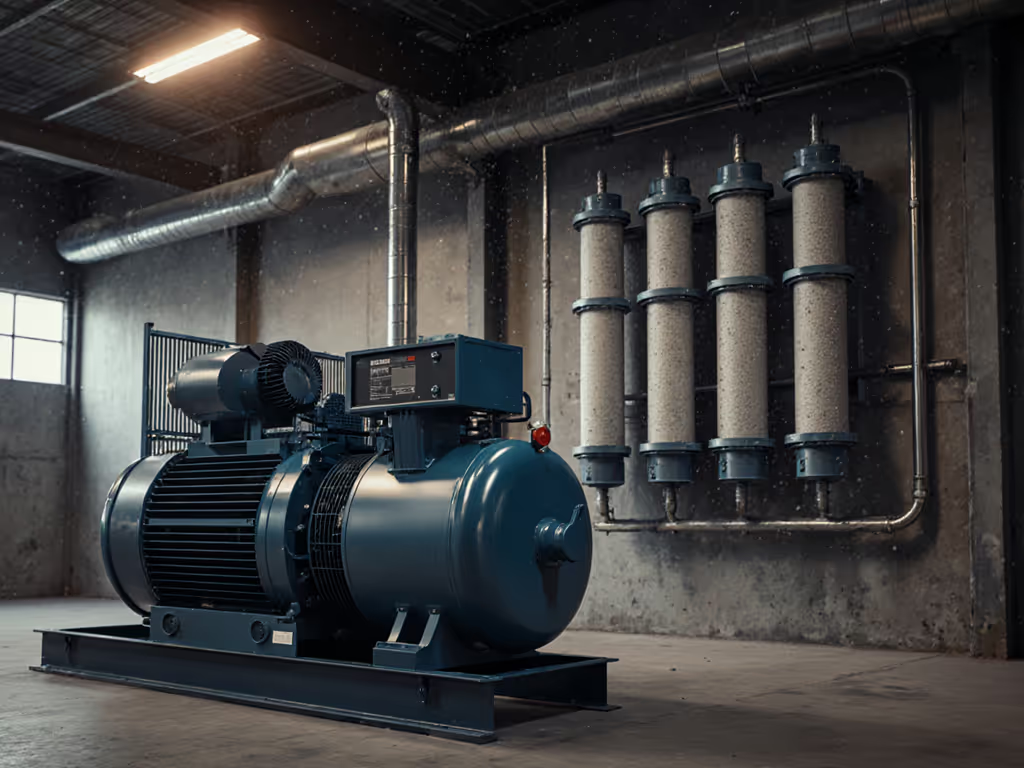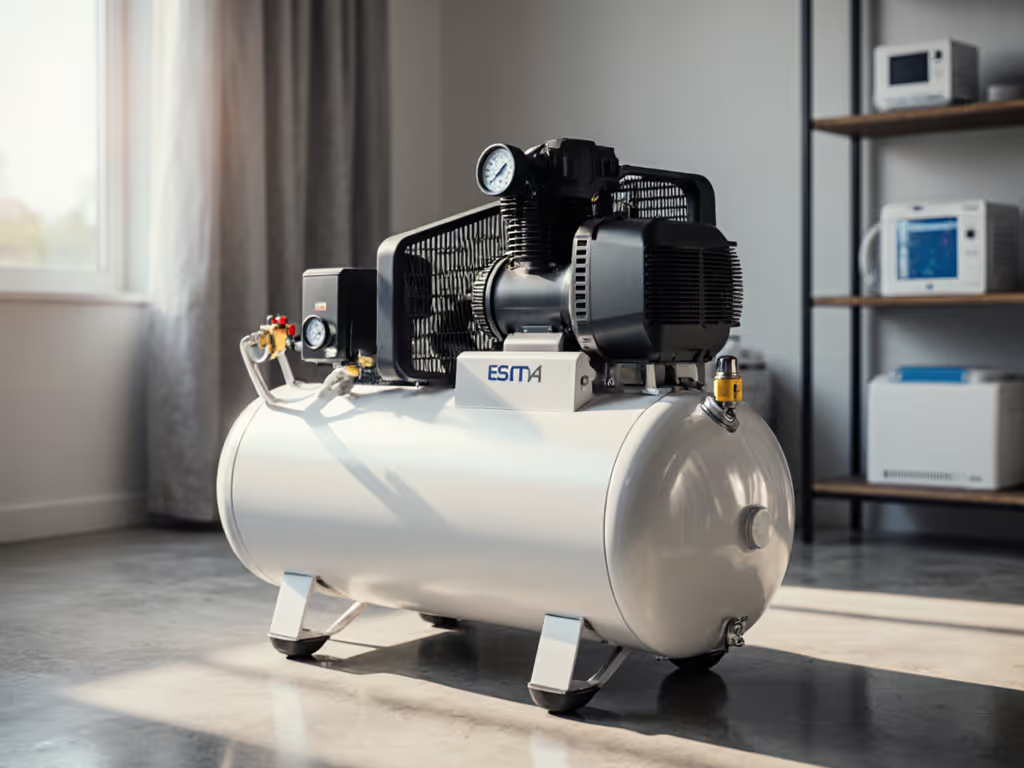
Optimized Air Compressor Systems: Lower Lifetime Costs
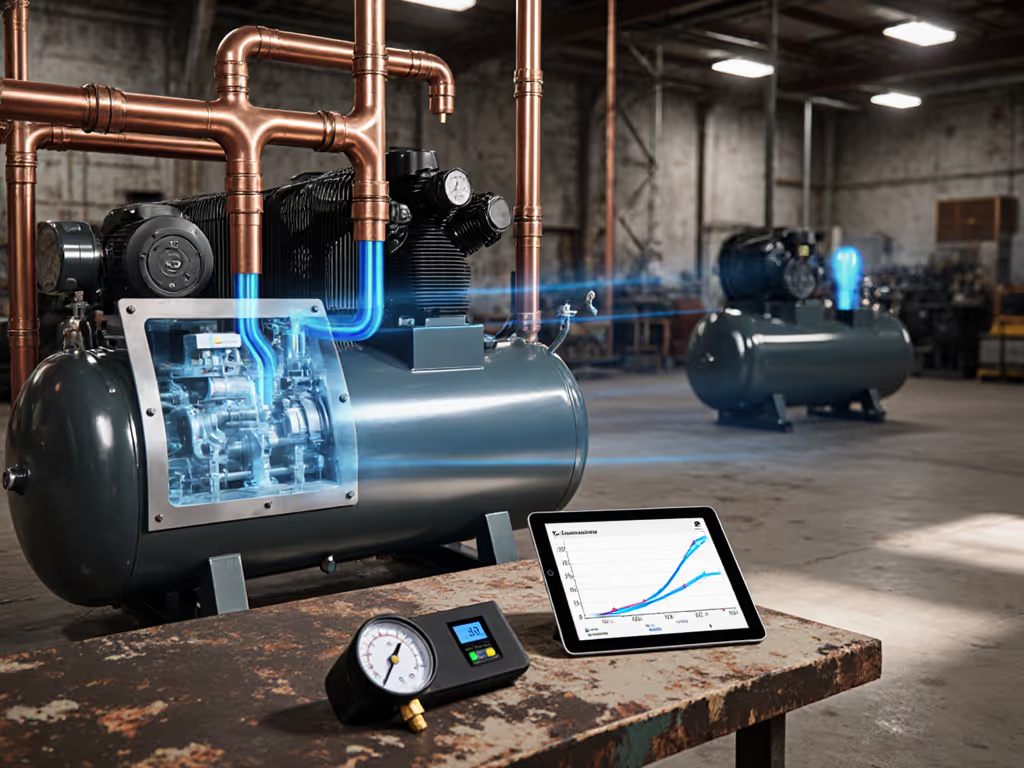
Let's cut through the marketing haze: compressed air is shockingly inefficient by design. Producing it consumes 8x more energy than equivalent electric motor output (per ASME EA-4 data), yet shops bleed cash daily by ignoring how to truly optimize air compressor system performance. I've seen contractors 'save' $800 on a compressor only to lose $1,200 annually on wasted electricity (and downtime). The fix isn't flashy tech. It's matching real-world load demands to honestly spec'd equipment while tracking every watt. Because TCO beats MSRP, always.
Why Your Compressor Bill Looks Like a Ransom Note
Compressed air systems waste energy on both sides of the circuit: supply (the compressor itself) and demand (how you use the air). Most shops fixate solely on compressor specs while ignoring the vampire loads draining their efficiency. Let's dissect both with real numbers. For a long-view cost analysis that includes purchase, energy, maintenance, and downtime, see our 10-year TCO breakdown.
Supply-Side Sabotage: The HP Mirage
Oversizing is the #1 killer of ROI. A nameplate hp rating means nothing without context. Here's why:
- Peak vs. running HP tricks buyers: A "5 HP" piston compressor might draw 36A at startup on 240V (8.6kW), but only sustain 18A (4.3kW) under load. Yet shops spec based on that fleeting peak number, oversizing by 30-50%. Result? Frequent short-cycling that wears pumps out and spikes demand charges.
- Duty cycle deception: A 70% duty cycle at 90 PSI might drop to 40% at 100 PSI. I recently audited a mobile detailing rig where the compressor never hit its rated 50 CFM at 100 PSI (only 32 CFM). Why? No aftercooler to normalize temperature. Always normalize CFM to working pressure (e.g., 90 PSI) using a flow meter, not manufacturer charts.
- Energy trap: That small cabinet shop I mentioned? They bought a used 25 HP rotary screw rated for 100 CFM. But their actual peak demand was 62 CFM. The compressor idled 63% of the time, drawing 12A nonstop. Math:
- 12A × 240V = 2.88 kW idle load
- 2.88 kW × 220 hrs/month × $0.14/kWh = $89/month just for idling
- Versus a right-sized two-stage: $0 idle cost
The fix: Map your actual CFM curve across pressure ranges. For intermittent use (nailers, impact wrenches), a piston compressor with a large receiver tank (e.g., 80+ gallons) beats an oversized rotary screw. For continuous loads (HVLP spray, die grinders), match compressor output to 85% of peak demand, never 100%. This avoids throttling losses.
Demand-Side Drain: Where 25% of Your Cash Vanishes
Leaks and artificial demand silently murder your TCO. Compressed air leaks alone account for 20-25% of system energy loss (per DOE studies), often invisible until you measure. Here's how to attack this side:
1. Air Leak Detection Methods That Don't Lie
Ultrasonic detectors ($150-$400) pay for themselves in weeks. One auto body shop I worked with found 37 leaks losing 18 CFM, equal to running a second compressor. But don't stop at detection:
- Prioritize fixes by CFM loss: A 1/8" leak at 100 PSI wastes 3.5 CFM. At $0.14/kWh, that's $470/year. Patch tape? Temporary. Replace worn couplings or use leak-sealant fittings.
- Schedule nightly audits: Measure base load at 2 AM. If amps don't drop near zero, you've got leaks or runaway demand. That cabinet shop's leak rate was 32% (fixed by tightening 127 connections in 3 hours).
2. Pressure Drop Reduction: The Silent Killer
Every 2 PSI pressure drop in your system requires 1-2% more energy to compensate (per Compressed Air Challenge data). Common culprits:
- Undersized hoses: 1/4" lines to sanders drop 15+ PSI at 15 CFM. Solution: 3/8" hoses + low-drop couplings.
- Poor regulator placement: Running everything at 100 PSI when tools need 90 PSI? That extra 10 PSI wastes 10-20% flow. Install local regulators at the tool, not just the main line.
Pro tip: Pressure drop reduction isn't just piping. Moisture traps without auto-drains cause 5-8 PSI blockages. Budget $85 for a float drain. It pays back in 4 months by eliminating manual draining errors.
3. Demand Control Strategies: Stop Paying for Idle Air
Artificial demand occurs when tools get more pressure than needed, forcing higher flow. For instance:
- An air wrench rated for 90 PSI running at 100 PSI consumes 11% more air
- HVLP spray guns fogging due to excess pressure
Three no-cost demand fixes:
- Lower header pressure: Reduce your main line to the minimum required by your highest-demand tool (e.g., 95 PSI vs. 100 PSI). Save 2.5-5% on energy instantly.
- Zone shutoff valves: For shops with separate bays, install solenoid valves on idle zones. That cabinet shop cut runtime 18% with $220 in valves.
- Timer-based shutdown: If no air is used after 6 PM, program an auto-shutoff. Recaptures 10-15% of runtime with zero process disruption.
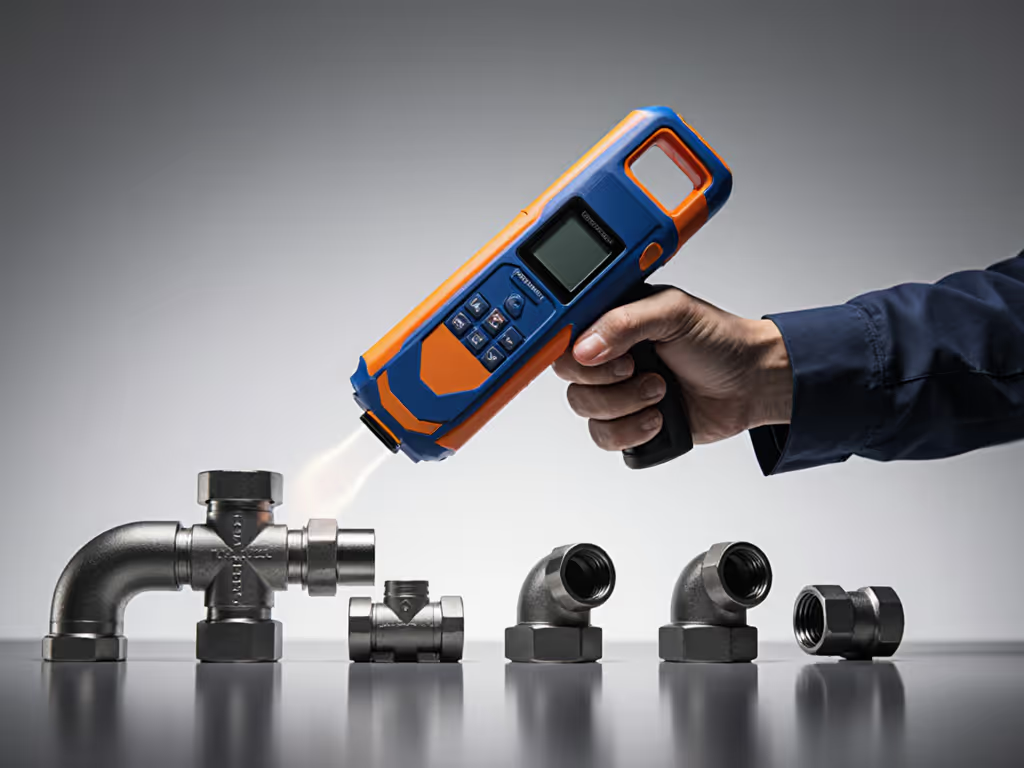
The Energy Audit Process: Your $0-ROI Blueprint
Forget expensive consultants. Run your own energy audit process in 4 spreadsheet-backed steps:
- Log demand: Attach a clamp meter for 48 hours. Record:
- Amps at startup (inrush)
- Amps at 50%, 75%, 100% load
- Idle amps (critical!)
- Map pressure drops: Measure PSI at compressor, midpoint, and tool inlet during peak use. >5 PSI drop = plumbing upgrade needed.
- Calculate true CFM: Use tank drawdown test:
(Tank Gallons × 0.537) ÷ (Recovery Time in Minutes) = Real CFM @ Pressure - Model TCO: Compare annual energy cost:
(Running kW × Hours × $/kWh) + Maintenance Costs
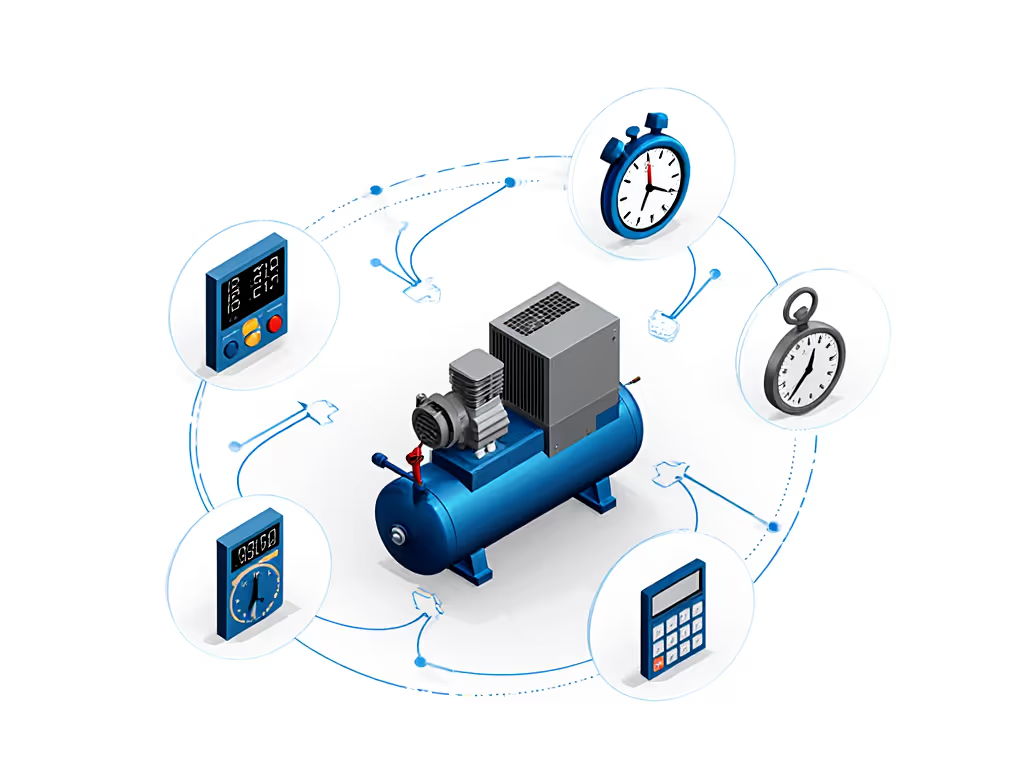
I did this for a framing contractor using a 30-gallon piston compressor. His "5 HP" unit drew 28A (6.7kW) under load but short-cycled every 90 seconds. TCO analysis showed:
- Current: $1,840/year energy + $320 maintenance
- Upgraded to 60-gallon tank + 5 HP two-stage: $1,210/year energy + $190 maintenance
- Payback: 11 months. Uptime rose from 68% to 92%.
Pay Once for Uptime, Not Forever for Waste and Noise
Optimizing compressed air isn't about buying more, it's about measuring smarter. That cabinet shop's 'cheap' rotary screw cost them $1,100 extra yearly in electricity. We specced a correctly sized two-stage unit with auto-drain and nighttime shutoff. Bills dropped 23%, and the payback hit in 10 months. No magic. Just math, meters, and matching specs to actual workflow.
Related Articles

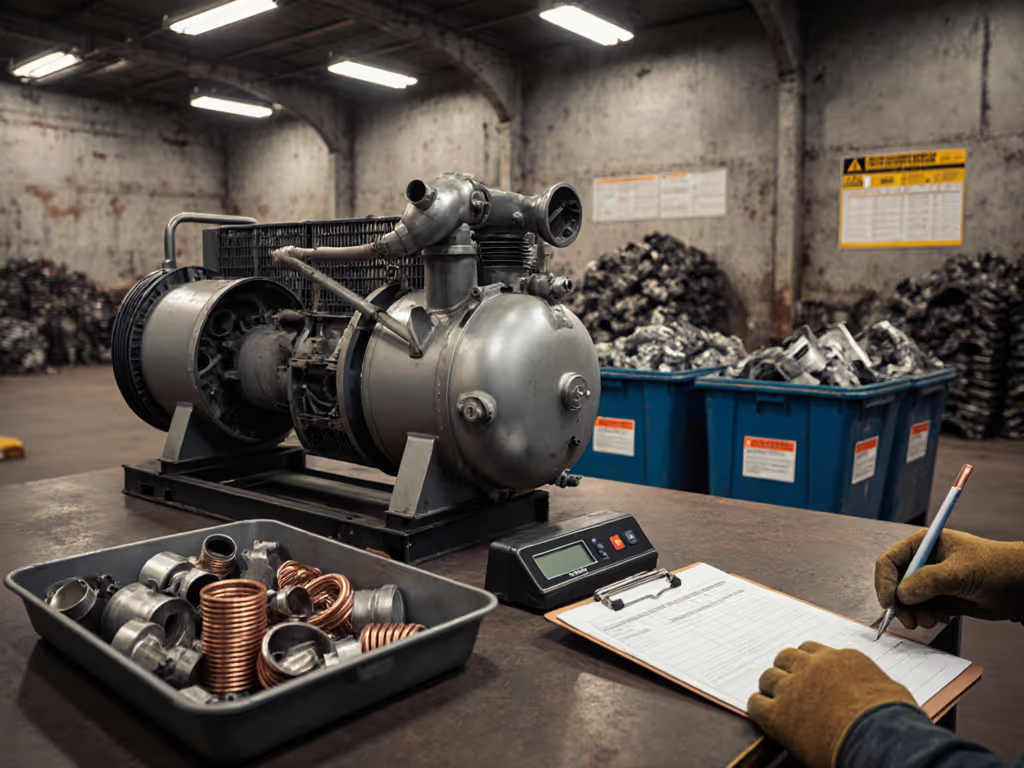
Verified Air Compressor Recycling: Sustainable Disposal
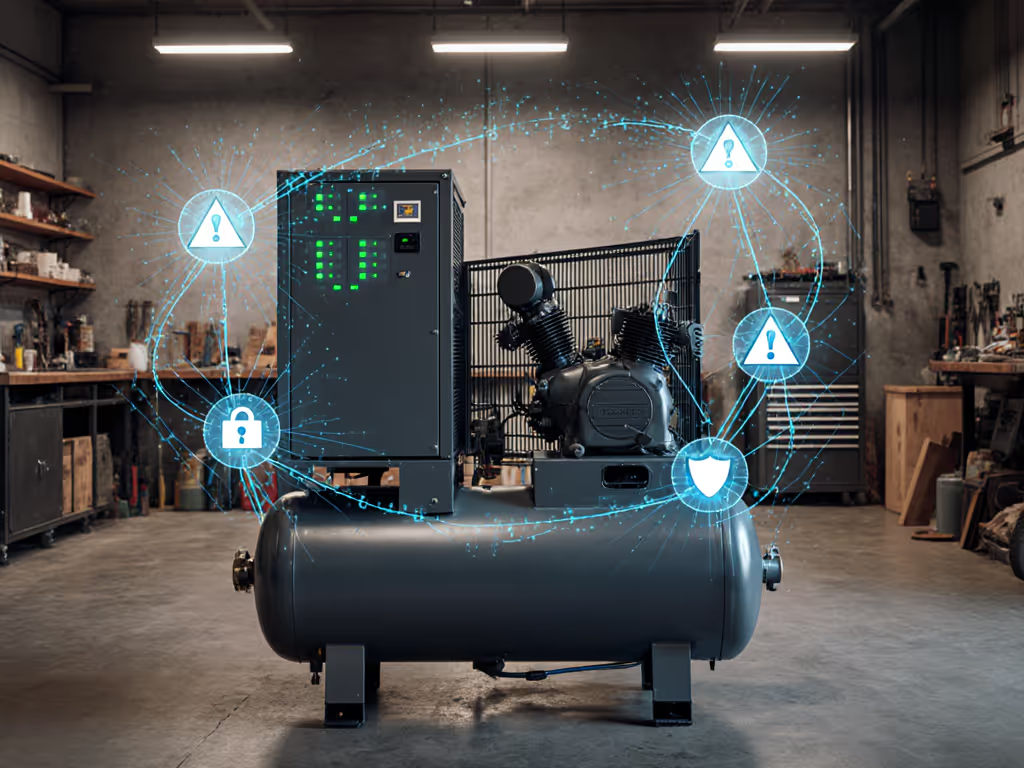
Secure Compressor IoT: Block Unauthenticated Attacks
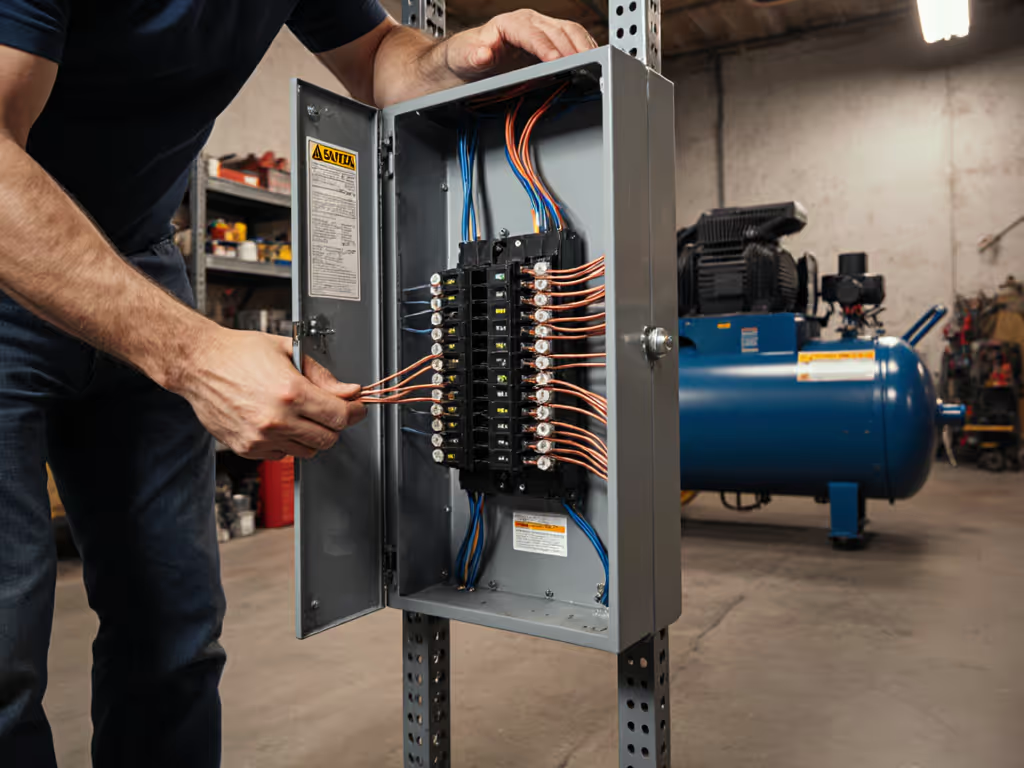
Compressor Electrical Safety: NEC Compliance Essentials
